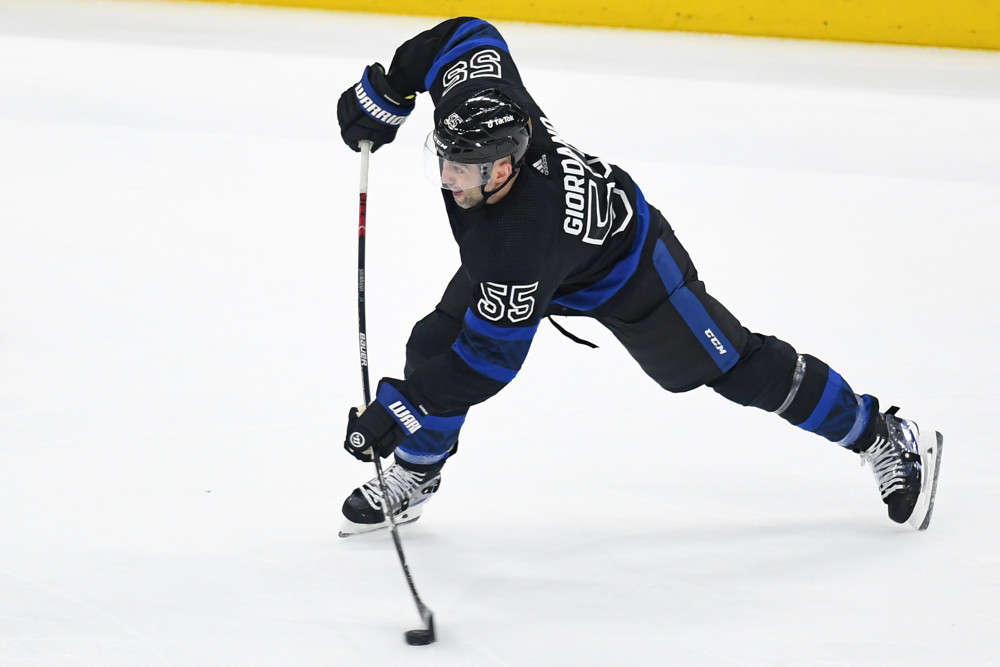Why Mark Giordano Was the Right Trade-Deadline Pickup for Maple Leafs
The Toronto Maple Leafs have taken us on a wild ride lately. This season alone, the peaks and valleys have been jarring. Their goaltending has been a Jekyll-and-Hyde nightmare. They haven’t met a multi-goal lead they weren’t happy to squander either, which has led to seesaw, must-watch affairs. As a result, the mecca of hockey has been as fascinating to follow as ever.
But is this rollercoaster conducive to winning? The past few postseasons, which culminated in a colossal upset at the hands of the Montreal Canadiens last year, would suggest it’s not.
As impressive as the 40-18-5 Leafs are on paper, they remain just as flawed on the ice. There are legitimate concerns between the pipes, along the blue line and upfront. Above all else, Toronto is fragile. The Leafs have developed a habit of crumbling at the first sign of adversity. You can detect the exact moment when the tide is beginning to turn and you know there’s nothing they can do to stop it. This variety of issues made the trade deadline difficult to navigate for general manager Kyle Dubas. In the end, he prioritized the defense by bringing in veteran rearguard Mark Giordano (50% retained) and scrappy forward Colin Blackwell in exchange for two second-round picks and a third-rounder.
The move should swiftly pay dividends because Giordano maintained his track record of strong defending with the Seattle Kraken. First off, the 38-year-old gaps up well in the neutral zone, nipping offensive designs in the bud:
Toronto already doesn’t spend much time in its end, as it ranks eighth in expected goals against. Seattle is even better on that front (3rd in xGA60), though, and Giordano led its blue line in stinginess while absorbing the second-highest usage (21:29 TOI/G) on the squad. Among the 137 defensemen who have logged at least 800 minutes at 5-on-5 this year, his 2.08 xGA60 is tied for sixth leaguewide.
His solid gap control demonstrates that he’s still a mobile and clever blueliner. He recognizes when to push up and when to sag off, and his angles are usually spot-on. This is particularly vital for a Maple Leafs club that may not be forced to defend all that often, but when it is tested, things can get ugly.
Thankfully, Giordano remains a capable in-zone defender too:
His stick work immediately stands out. It’s heavy rather than lightning-quick. If he makes any contact whatsoever with the puck, he’s breaking up the play. Passes don’t slip through the cracks. Perhaps more importantly for the Leafs, he competes. A common sight in Toronto is its defense sitting back and hoping for the opposition to make a mistake. This works when your roster is built to protect the house. Keefe’s troops, however, are as soft as it gets in front of their cage. It isn’t some coincidence that they’ve conceded the fourth-most rebound goals in the NHL. Giordano, for his part, looks to engage and generate miscues through pressure. When the opposition fires pucks toward the net, he battles to win inside position or clear the goaltender’s sightline.
Outside of Ilya Lyubushkin, no other Leafs defenseman is stout at the point of attack. Whether you value underlying numbers, isolated impacts or simply the eye test, Morgan Rielly is certifiably bad defensively. Jake Muzzin has looked like a shell of himself this season, as the Leafs are at their most generous during his shifts. Justin Holl is unreliable. Rasmus Sandin and Timothy Liljegren have yet to prove they can be trusted in a top-four role. While Giordano isn’t a cure-all, he offers experience, stability and a healthy dose of jam along the blue line. He makes opponents work for their opportunities.
He also provides a level of poise to a blue line that’s disposed to imploding. When the pressure rises, Toronto’s defensemen cough pucks up like nobody’s business. Only one club has committed more defensive zone giveaways this season. And remember: They spend far less time in their end than most teams.
Giordano isn’t a spectacular puck-mover, but he makes smart, efficient decisions and manages to keep his cool in sticky situations:
That composure in the face of forecheckers will prevent many of Toronto’s self-inflicted wounds from materializing. He’s seldom guilty of mind-numbing turnovers and doesn’t freeze up at the sight of oncoming opponents.
The former Calgary Flames and Seattle Kraken captain doesn’t suffer from jitters. He’s fallible, of course, but he generally does well to stay calm, recognize his outlets and avoid getting himself into trouble. That in and of itself is a huge boost to a team that just needs to stop shooting itself in the foot. Give the puck to Auston Matthews or Mitch Marner, and get out of the way.
It’s worth noting that Giordano has a little offense left in the tank too:
These days, there isn’t much east-west wiggle in his game. However, the 2018-19 Norris Trophy winner still has great timing. He knows how to create shooting lanes from the point, he holds on to the puck just long enough to draw defenders in and pass teammates open and his reads on when to jump into the rush are outstanding.
Moving from a defensive group like the Kraken to the offense-first Leafs should unlock additional production (23 points in 56 games at the moment) as well.
Ultimately, though, this trade is about defense and poise. Toronto sorely needed to boost those two attributes on the back end. When the Leafs hit a patch of turbulence—and they invariably will—now they’ll have another steady hand to depend on.
Recent Posts

How Corey Perry Is Making His Presence Felt With the Lightning
View Post »
How Adam Fox Pushed the Rangers Past the Penguins
View Post »

